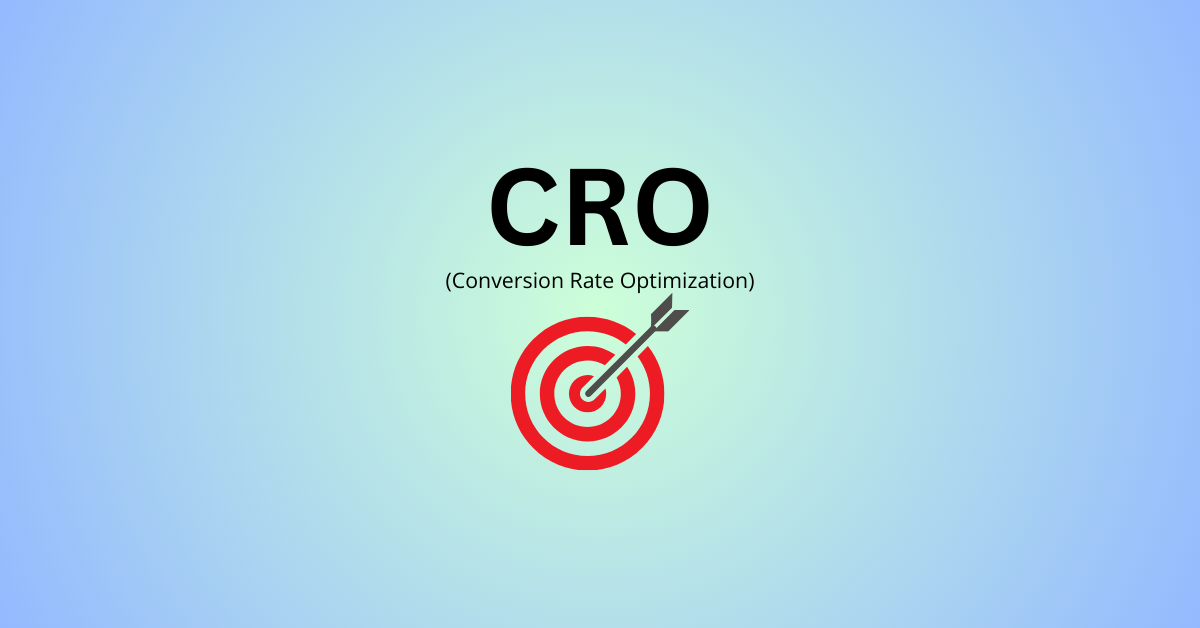In the world of digital marketing, driving traffic to your website is important, but turning that traffic into customers is even more critical. This is where Conversion Rate Optimization (CRO) comes into play. CRO is the process of improving your website or landing pages to increase the percentage of visitors who take the desired action, whether that’s making a purchase, filling out a form, or signing up for a newsletter. In this blog, we’ll explain what CRO is, how it works, and why it matters for the success of your business.
1. What is Conversion Rate Optimization (CRO)?
Conversion Rate Optimization (CRO) is the practice of increasing the percentage of website visitors who complete a specific action, called a conversion. This could be anything from buying a product to subscribing to a newsletter or downloading an eBook.
A conversion rate is calculated by dividing the number of conversions by the total number of visitors to your site, and then multiplying by 100 to get a percentage. For example, if 100 people visit your website and 5 of them make a purchase, your conversion rate is 5%.
CRO focuses on understanding user behavior, making data-driven changes to improve your website, and ultimately getting more value from your existing traffic.
2. How CRO Works:
CRO involves analyzing how users interact with your site, identifying obstacles that may prevent them from converting, and testing changes to improve results. Here are some key steps involved in the CRO process:
a. Analyzing User Behavior:
The first step in CRO is to understand how visitors behave on your website. Tools like Google Analytics, heatmaps, and user recordings can help you see where users are clicking, how far they scroll, and where they drop off. This data provides insight into areas where you can improve.
b. Identifying Barriers to Conversion:
Once you understand user behavior, the next step is to identify barriers that prevent visitors from converting. This could include issues like complicated navigation, slow loading times, unclear calls to action (CTAs), or too many form fields. These obstacles can frustrate users and lead them to leave your site without taking action.
c. Running A/B Tests:
A/B testing is an essential part of CRO. You create two versions of a webpage (version A and version B) and split your traffic between them to see which performs better. You could test different headlines, button colors, or page layouts to determine which version drives more conversions. By continuously testing and optimizing, you can find the best-performing elements and implement them across your site.
d. Implementing and Monitoring Changes:
After identifying what works best through testing, you can implement those changes permanently. However, CRO is an ongoing process. It’s important to monitor the impact of your optimizations regularly and keep testing new ideas to improve further.
3. Why CRO Matters for Your Business:
Conversion Rate Optimization is crucial because it helps you get the most out of your existing website traffic. Here are some reasons why CRO matters for your business:
a. Increases Revenue Without More Traffic:
One of the biggest benefits of CRO is that it helps you boost revenue without the need to attract more visitors. By optimizing your site, you can increase the percentage of users who convert, meaning you’re getting more sales or leads from the same amount of traffic. This is especially valuable if your marketing budget is limited and you want to maximize your return on investment (ROI).
b. Reduces Cost Per Acquisition (CPA):
Acquiring new customers through paid advertising or other marketing efforts can be expensive. CRO allows you to lower your cost per acquisition by converting more visitors into customers. This makes your marketing efforts more efficient, as you’re generating more conversions from the same investment.
c. Improves User Experience:
A well-optimized website provides a better user experience, making it easier for visitors to navigate and complete their desired actions. By removing obstacles and simplifying the conversion process, you create a smoother experience that keeps users engaged. A good user experience often leads to higher satisfaction and increased customer loyalty.
d. Helps You Stay Competitive:
In today’s competitive digital landscape, businesses need every advantage they can get. CRO helps you stay ahead by continuously improving your website’s performance. If your competitors are converting visitors at a higher rate, they’ll get more value from their traffic, which could give them an edge in the market. By focusing on CRO, you can keep up with or surpass your competition.
e. Provides Measurable Results:
CRO is data-driven, meaning that every change you make is based on measurable outcomes. You can track how each optimization impacts your conversion rate, allowing you to see the direct results of your efforts. This makes it easier to justify your investment in CRO and make informed decisions for future improvements.
4. Common Areas for CRO:
There are several areas on a website that businesses typically focus on when optimizing for conversions. Here are some common areas to improve:
– Calls to Action (CTAs): Experiment with different text, colors, and placements for your CTA buttons to encourage more clicks.
– Forms: Simplify your forms by removing unnecessary fields or breaking them into steps to reduce friction for users.
– Landing Pages: Optimize your landing pages by making them more relevant to the ad or email that drove traffic to them.
– Checkout Process: Streamline your checkout process to reduce cart abandonment and make it easier for customers to complete their purchase.
Conclusion:
Conversion Rate Optimization (CRO) is an essential strategy for businesses looking to improve their website’s performance. By focusing on CRO, you can increase revenue, improve user experience, and lower your customer acquisition costs. CRO allows you to get more value from your existing traffic by turning more visitors into customers or leads.




